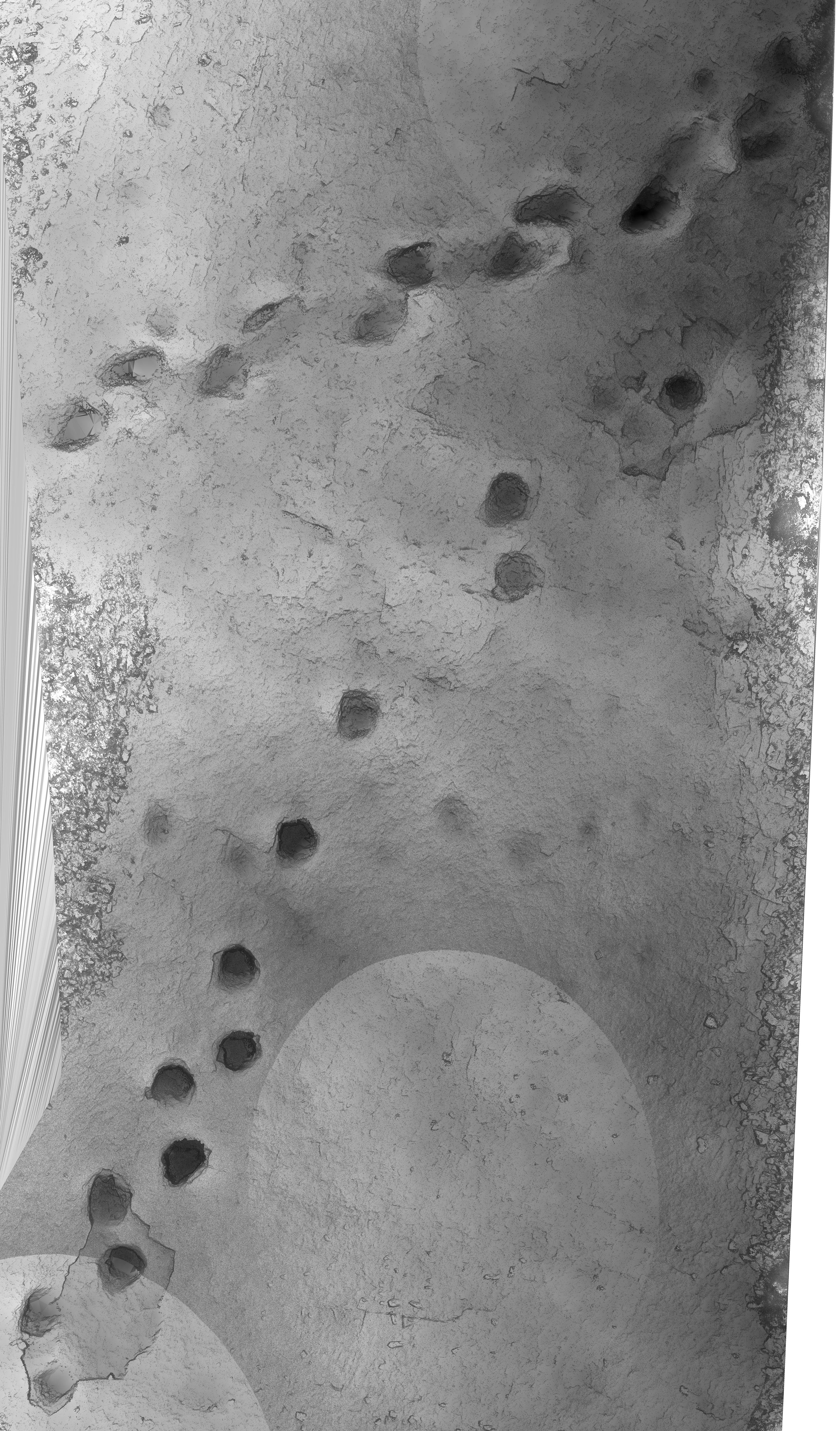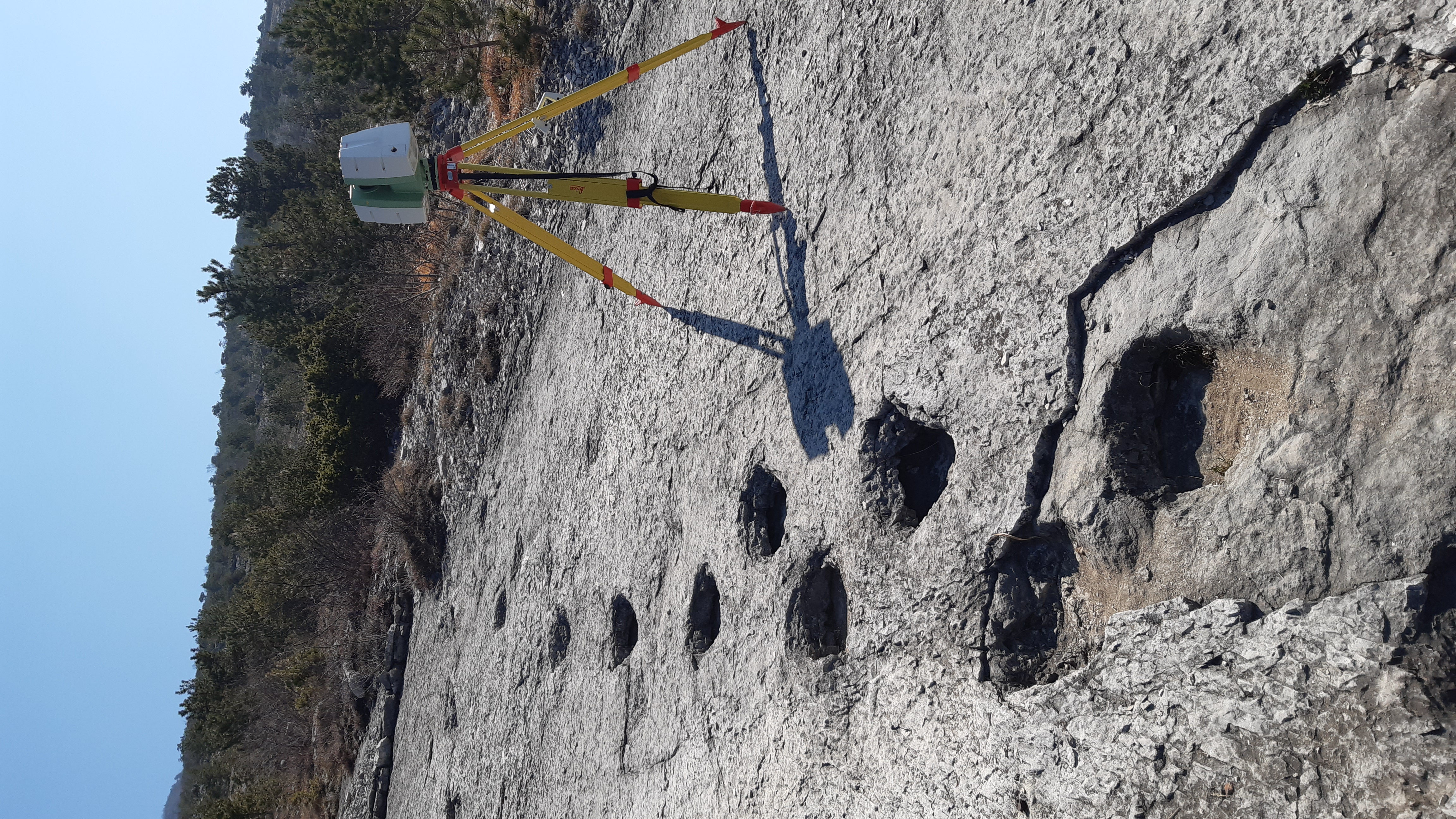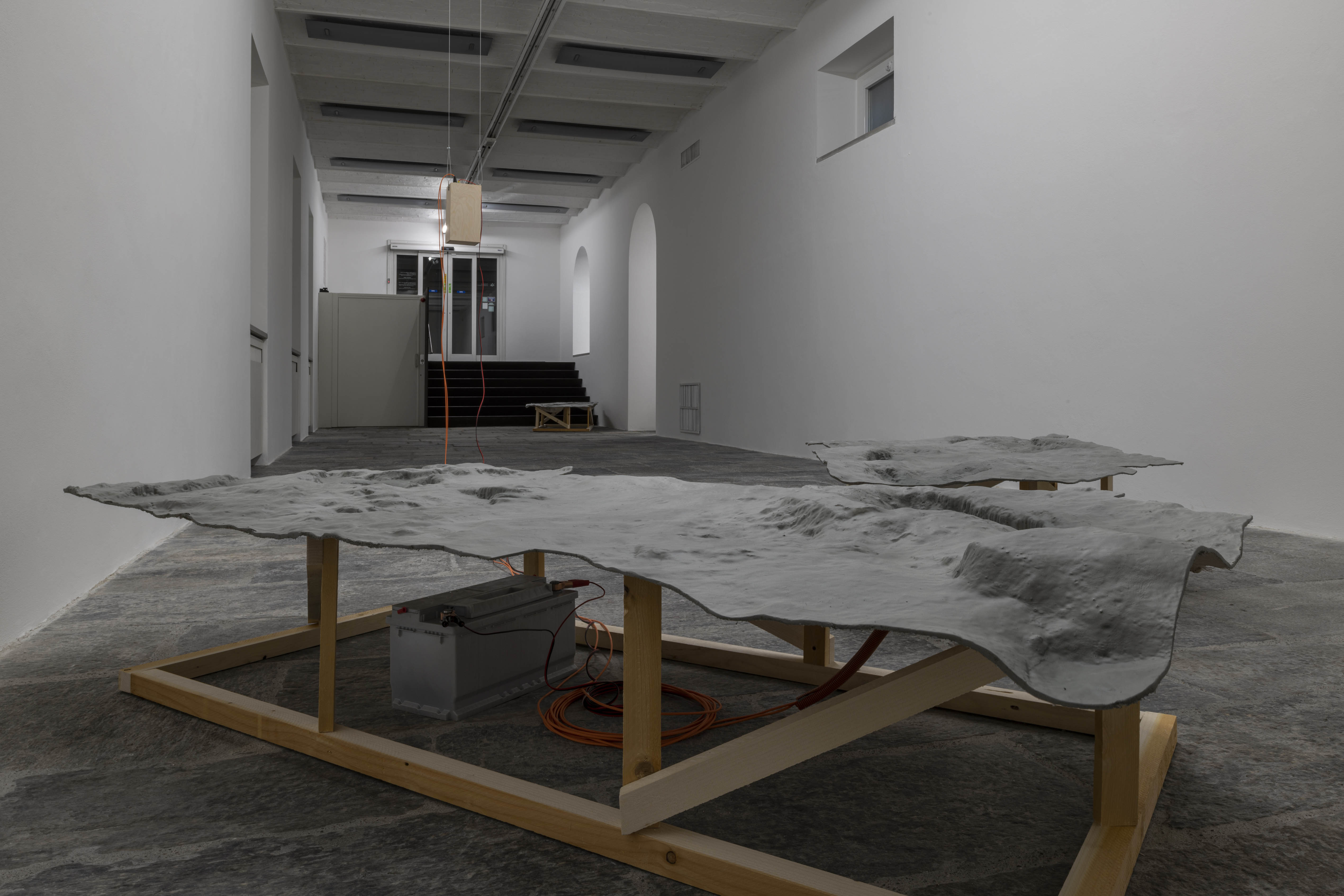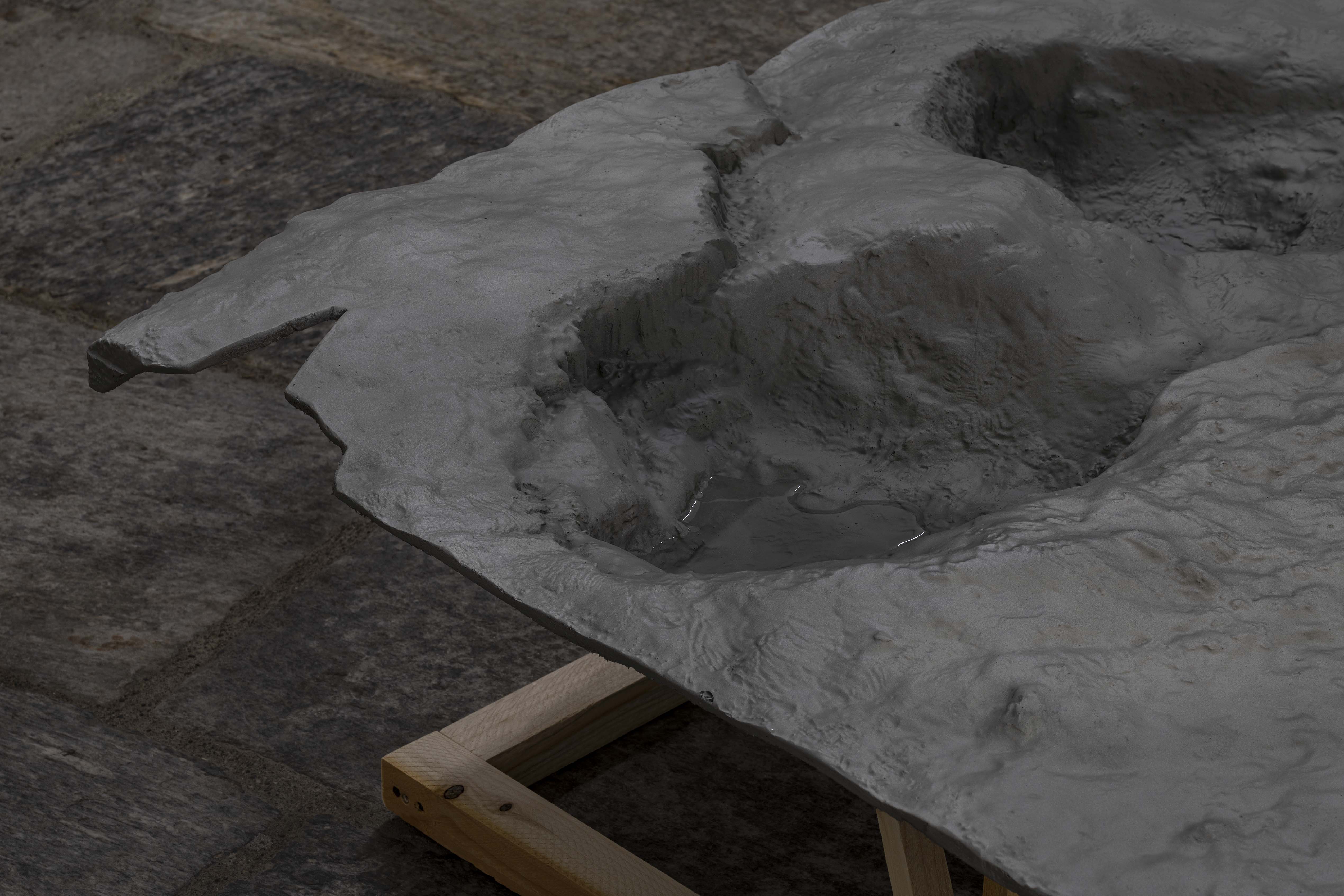Rendezvous
2022
“If a body fossil is a picture, track fossils are movies” Massimo Bernardi, paleontologist
Most fossils are a memory of stagnation: an imprinted body (plantlike or animal) staying in one position over a long stretch of time. But through time, what remains of a movement? What way can an ephemeral action be stored between the archival strata of soil? The paleontological field of ichnology, explores the traces of those bodies that came and went, by studying fossilized footprints. What remains in such examples is not the author, but its action, united with environmental conditions. Referred to as Ichno (trace) species these fossils describe a body - a species indeed - of relation: a circumstantial body that equally originated from author, soil, and weather system.
In the Italian province of Trento, not one but two tracks of dinosaurs have been fossilized within the landscape; converging into a curious encounter. While the ichnospecies meet it appears the author species would have lived hundreds, possibly thousands, of years apart, signifying an encounter that trespasses the layers of time; of diachronic destinies unfolding.
In collaboration with MUSE (Museo delle Scienze) the fossilized encounter near Trento was mapped by means of a 3D scan. In Rendezvous the depressions of the fossilized tracks serve as the reservoirs of an initiated third “footprint”, embodied by a carbon dioxide measurement taken in real time using a sensor within the space. Transduced as vibrations on the surface of a puddle of water, this third trace modulates on the breath of a visitor.
* The title of the project refers both to the French expression for a place of encounter, as well as the more internationally used term for the meeting of two spacecrafts, when after a set of complex orbital maneuvers they arrive at the same orbit and approach to a close enough distance to make contact
2022
“If a body fossil is a picture, track fossils are movies” Massimo Bernardi, paleontologist
Most fossils are a memory of stagnation: an imprinted body (plantlike or animal) staying in one position over a long stretch of time. But through time, what remains of a movement? What way can an ephemeral action be stored between the archival strata of soil? The paleontological field of ichnology, explores the traces of those bodies that came and went, by studying fossilized footprints. What remains in such examples is not the author, but its action, united with environmental conditions. Referred to as Ichno (trace) species these fossils describe a body - a species indeed - of relation: a circumstantial body that equally originated from author, soil, and weather system.
In the Italian province of Trento, not one but two tracks of dinosaurs have been fossilized within the landscape; converging into a curious encounter. While the ichnospecies meet it appears the author species would have lived hundreds, possibly thousands, of years apart, signifying an encounter that trespasses the layers of time; of diachronic destinies unfolding.
In collaboration with MUSE (Museo delle Scienze) the fossilized encounter near Trento was mapped by means of a 3D scan. In Rendezvous the depressions of the fossilized tracks serve as the reservoirs of an initiated third “footprint”, embodied by a carbon dioxide measurement taken in real time using a sensor within the space. Transduced as vibrations on the surface of a puddle of water, this third trace modulates on the breath of a visitor.
* The title of the project refers both to the French expression for a place of encounter, as well as the more internationally used term for the meeting of two spacecrafts, when after a set of complex orbital maneuvers they arrive at the same orbit and approach to a close enough distance to make contact
Replica of 3D scanned fossil footprints. Fiberglass and acrylic resin, paint, low frequency transducer, CO2 sensor, programmed arduino, wooden cabinet and frame construction, electric cables, 12V car battery, water.
Many thanks goes out to the invitation of curators Alessandra Troncone and Chiara Pirozzi, and all kind people at Fondazione Arnaldo Pomodoro. I’m grateful for the generous advice and support of Massimo Bernardi (MUSE Museo Delle Scienze, Trento), Monique de Wilt, Giulia Principe, Lotte Nijhof, Arend Nijkamp, Kees Reedijk and Seamus Cater (technical advise and support Rijksakademie Amsterdam) and Jeremi Biziuk and Stef Veldhuis (production assistance).
Published writing about Rendezvous: exibart (ENG), Artribune (IT)
image 1-2 process documentation in collaboration with MUSE
image 3-8 by Carlos Tettamanzi
Many thanks goes out to the invitation of curators Alessandra Troncone and Chiara Pirozzi, and all kind people at Fondazione Arnaldo Pomodoro. I’m grateful for the generous advice and support of Massimo Bernardi (MUSE Museo Delle Scienze, Trento), Monique de Wilt, Giulia Principe, Lotte Nijhof, Arend Nijkamp, Kees Reedijk and Seamus Cater (technical advise and support Rijksakademie Amsterdam) and Jeremi Biziuk and Stef Veldhuis (production assistance).
Published writing about Rendezvous: exibart (ENG), Artribune (IT)
image 1-2 process documentation in collaboration with MUSE
image 3-8 by Carlos Tettamanzi








